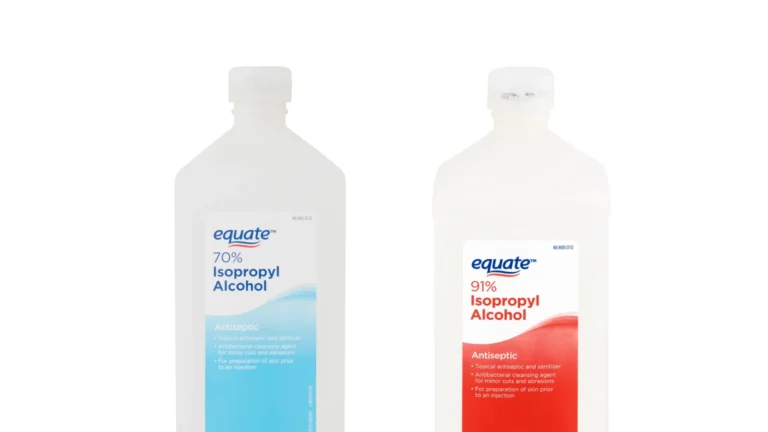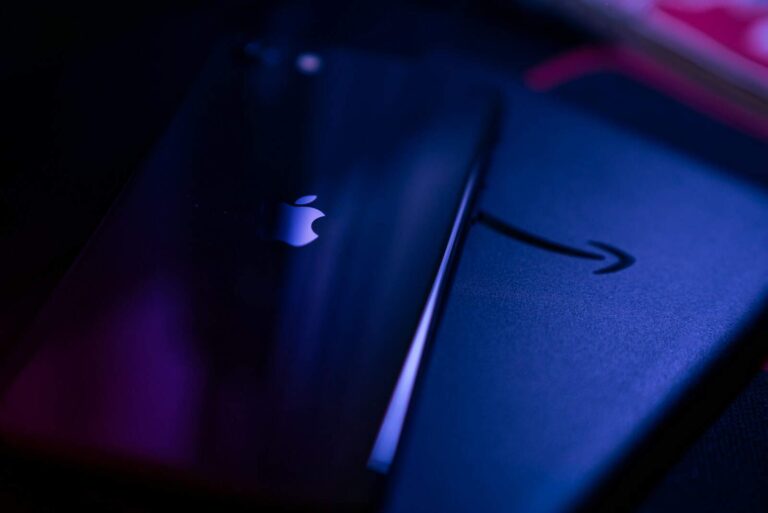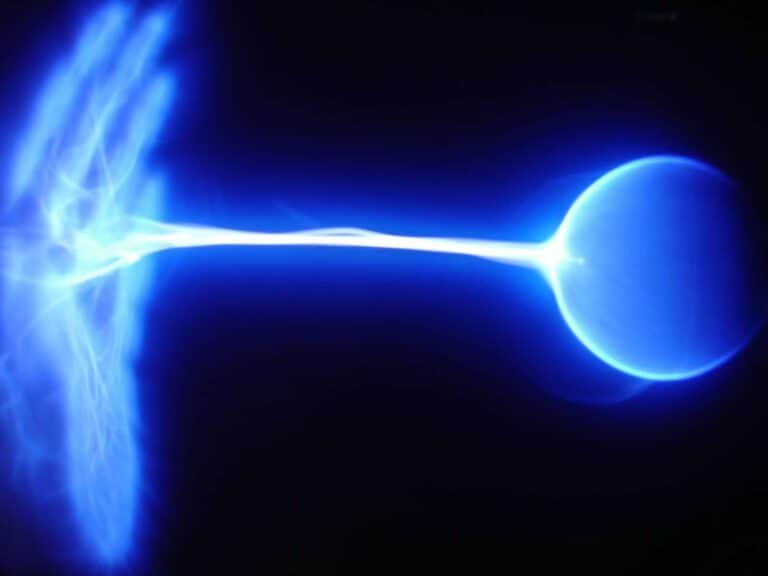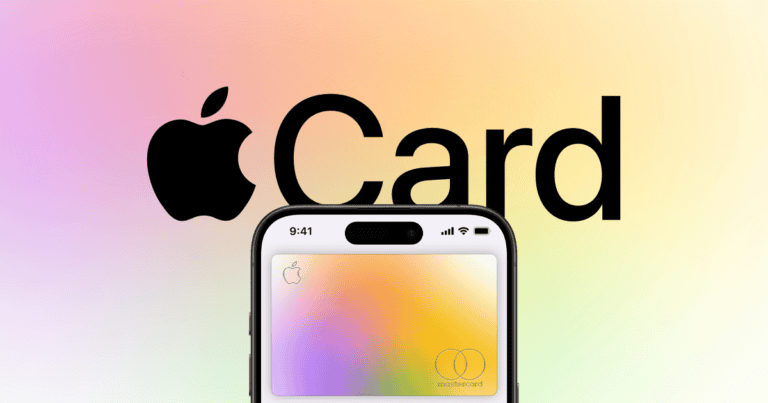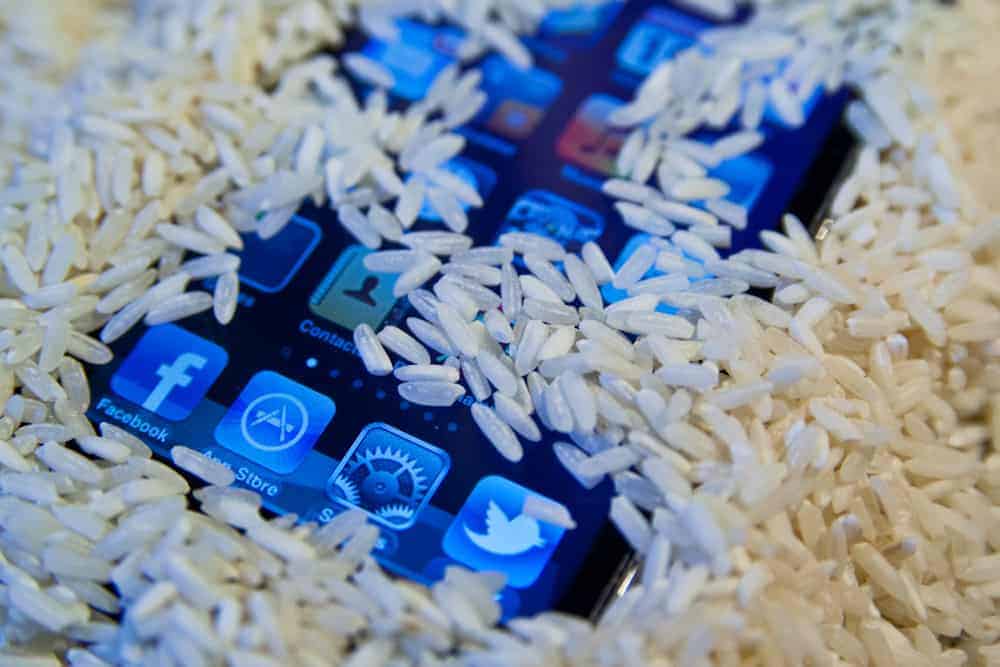
While the rice method is a popular DIY solution for wet electronics, it’s not the most effective and can even introduce further damage. It’s generally recommended to avoid using rice altogether and it still remains a widely debated topic in the field of electronics. Some manufacturers (including Apple) have even come out and declared that the rice trick is not only a myth but can further cause damage to your device and to avoid it completely.
With that said (and we agree), there are still going to be a significant number of people who want to try it anyway. So if you’re one of those people and already have your water damaged device sealed up in a bag of rice, read this guide to get the most effectiveness out of your setup. This guide is written for people who know the above but still wish to try the rice method.
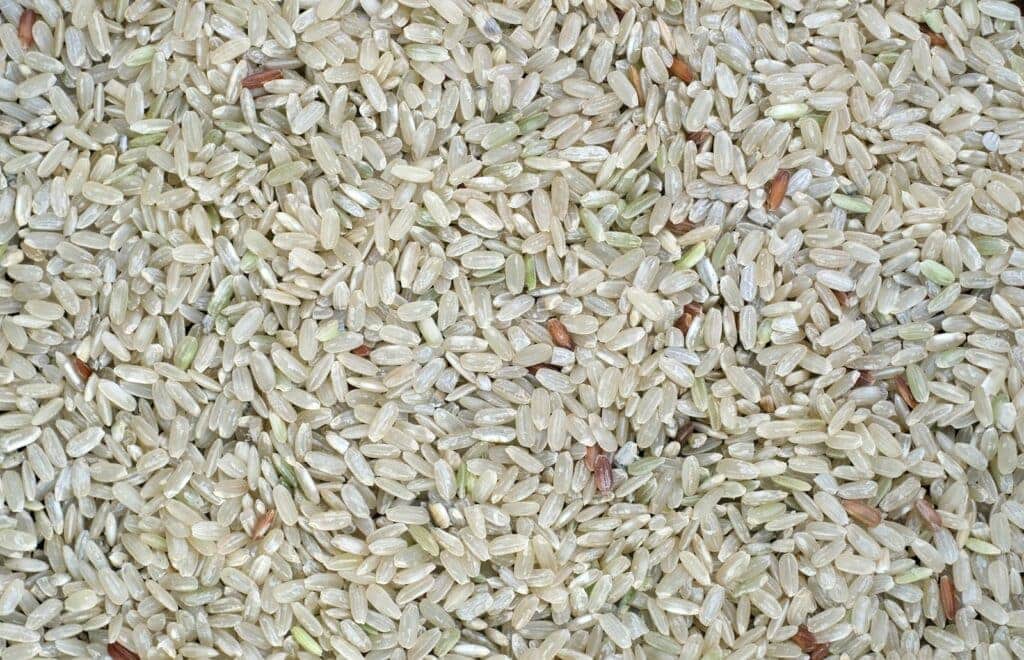
How Long to Leave Wet Electronics In Rice?
While it may not be the most effective method, the rice trick is still doing SOMETHING to try and tackle the problem of water damage on your electronics device. It can work to some extent if the device is stored properly, but again – the effectiveness of it is still debatable. The internet is filled with anecdotes going either way on platforms like Reddit, Quora, X, Facebook, and Youtube, etc.
But if you are going to do the rice trick you’re going to want to leave your device in for at least 24 hours, but it would be better if you left it for 48-72 hours. Make sure your device is oriented in a way so that the water stuck in it will be naturally pulled out via gravity.
Why The Rice Trick Is Considered A Myth
The reason why most experts now claim the rice trick is a myth is because avoiding rice altogether is actually more effective in most water damage cases. Just a natural air dry with gravity pulling the water out or other tricks like using low-frequency sounds, taking apart the device to allow the pieces to dry in the open air, etc. are much more effective. Even silica gel packets are considered more effective than rice, as dry rice doesn’t effectively remove moisture from the intricate internal components of electronic devices and can even cause additional damage by leaving behind dust and starch particles.
If you’ve changed your mind at this point about using rice to dry out your device, then instead focus on removing as much water as possible from the device by gently shaking it and using absorbent cloths. Then, let it air dry in a warm, well-ventilated area for at least 48-72 hours. For stubborn moisture, consider using desiccant packets or seeking professional repair services.
There are low frequency sound videos that can also be effective that you can find on YouTube depending on your device. The vibration noises from these videos can sometimes help move some stubborn water drops trapped deep inside your device, but the effectiveness varies. It seems like people with water problems on smart watches have the most success with this method.
Remember, the faster you act after your electronics get wet, the better the chances of saving it. Turn off the device immediately and avoid plugging it in or attempting to turn it on until it’s completely dry. Dealing with liquid-damaged electronics is a complex task, and recovery from such damage is challenging.
| Method | Effectiveness | Timeframe | Risks | Notes |
|---|---|---|---|---|
| Rice | Low (may not absorb much moisture, can trap moisture and promote mold) | 24-48 hours (often ineffective) | Trapped moisture, mold growth, physical damage from grains | Not recommended, consider alternative methods |
| Silica gel packets | Moderate (absorbs moisture more effectively than rice) | 24-48 hours | Can be less effective for large devices | Use sealed packets, prioritize removing visible water first |
| Open air | Moderate (effective for simple spills, not submersion) | 24-48 hours | Dust and debris contamination | Place device upright, prioritize removing visible water first |
| Professional drying services | High (specialized equipment removes moisture quickly and thoroughly) | Varies depending on service | Costly option | Best for critical devices or extensive water damage |
As you can see, the effectiveness of each method varies, and the timeframe for leaving your electronics in the chosen medium can also vary. In general, it’s best to act quickly when your electronics get wet, and to avoid using rice as it’s not very effective and can actually damage your devices. If you’re unsure about what to do, it’s always best to consult a professional.
Key Takeaways
- Immediate Action: Turn off and disassemble the device immediately to prevent further damage.
- Rice Myth Debunked: Using rice as a desiccant is largely ineffective and can cause more harm than good.
- Professional Advice: Seek professional help for cleaning and drying the device, especially if unsure about DIY methods.
The Rice Myth: More Harm than Help
The age-old advice of burying your wet electronics in rice has been a go-to solution for many. However, this method is more myth than reality. Rice, although a natural desiccant, is ineffective in absorbing moisture from electronic devices. In fact, it can introduce dust and starch into the device, potentially causing further damage.
I’m Going With The Rice Method Anyway
If your heart is set on putting your wet device in a bag of rice, do a few steps before-hand to at least improve your odds of success. Here are some steps designed to minimize the potential harm and slightly increase the effectiveness of the Rice Method:
Preparation:
- Act quickly: The sooner you start drying, the less time water has to cause corrosion.
- Disassemble as much as possible: Remove batteries, cases, and any easily detachable parts to improve access to moisture.
- Remove visible water: Use a clean, absorbent cloth or soft paper towel to soak up any surface water.
- Choose your rice: Use uncooked white rice, as it’s the most absorbent. Avoid brown rice or flavored varieties.
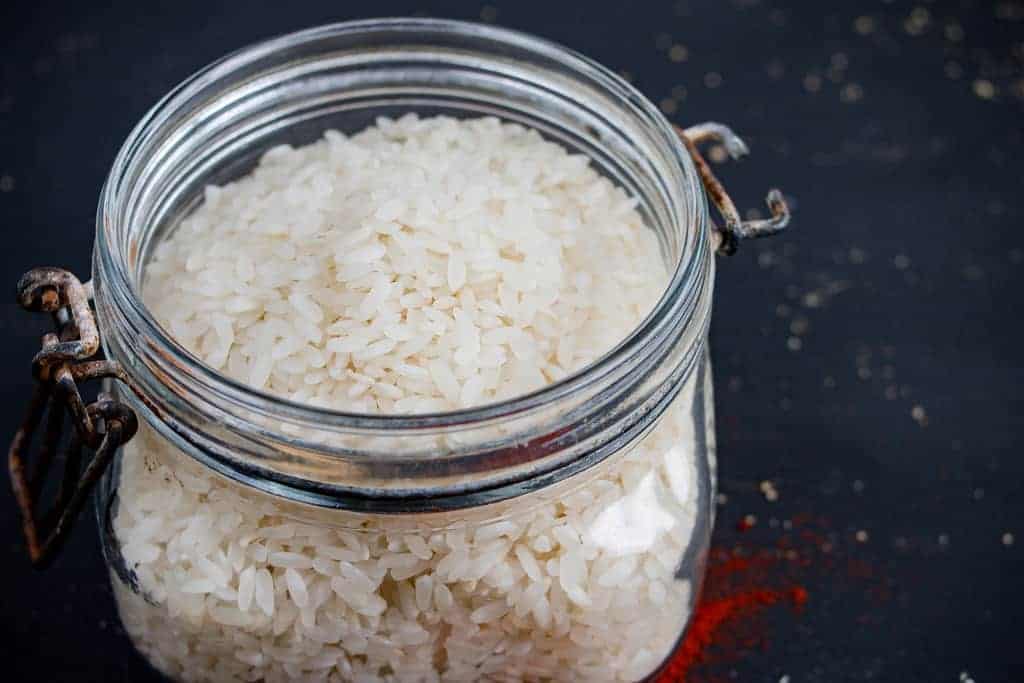
Rice Bath:
- Use a sealed container: Place the device in a plastic bag or airtight container filled with plenty of rice (submerge the device completely). Seal the container tightly to prevent moisture escape.
- Warmth over heat: Place the container in a warm (not hot!) environment, ideally around 25-30°C (77-86°F). Avoid direct sunlight or heaters.
- Replace the rice: Rice loses its absorbency over time. Replace the rice with fresh every 12-24 hours.
- “Soak” for 24-48 hours: Let the device dry out as much as possible in the rice before you try to power it on. If you continue to see moisture or water, don’t attempt to turn it on!
Important Notes:
- This method is not guaranteed to save your electronics. Corrosion can occur within minutes of water exposure, and rice may not reach all affected areas.
- Rice can damage your device: Tiny rice particles can become lodged in ports, buttons, and other openings, causing additional problems.
- Mold risk: Leaving electronics in a moist environment for extended periods increases the risk of mold growth, which can further damage your device and potentially harm your health.
Better Alternatives to Rice:
- Silica gel packets: These are significantly more effective moisture absorbers than rice and pose less risk of physical damage. Use several packets in a sealed container with your device.
- Open-air drying: This is a good option for minor spills or devices with water resistance. Place the device upright in a well-ventilated, dust-free environment.
Remember, professional drying services offer the best chance of salvaging your device and are generally recommended over DIY methods. They have the equipment and expertise to quickly and effectively remove moisture and minimize damage.
Real-World Experience
Reddit users shared their experiences and advice, emphasizing the risks of using rice. One user, an apparent expert in electronics repair, advised against powering wet electronics, as it can turn them into “miniature smoke machines.” They recommended disassembling the device, using high-percentage isopropyl alcohol for cleaning, and ensuring thorough drying.
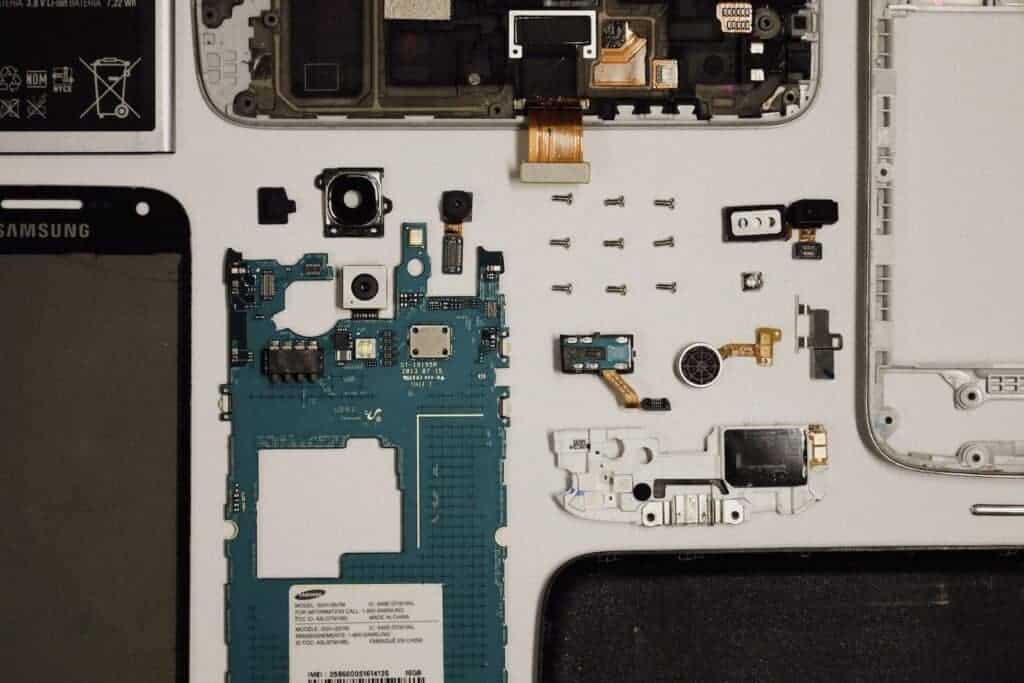
Professional Cleaning and Drying Techniques
Professionals in electronics repair suggest a more systematic approach:
- Immediate Power-Off: Turn off the device immediately to prevent short circuits.
- Disassembly: Carefully disassemble the device to expose all components.
- Cleaning: Use 97% or higher isopropyl alcohol and a soft brush to clean the PCBs.
- Drying: Allow the device to dry completely in a controlled environment.
Practical Tips from Reddit
- Avoid using rice; instead, use silica gel packs or desiccant pellets.
- Be cautious when disassembling, as small parts can be easily lost or damaged.
- Consider replacing the battery, as it’s likely damaged by water.
Understanding the Science Behind Water Damage
Water damage in electronics is not just about the liquid; it’s the minerals and contaminants in the water that cause corrosion and deposits on the components. This is why simply drying the device isn’t enough; thorough cleaning is crucial to remove these harmful residues.
How Long Should Electronics Be Left to Dry?
According to various sources, the drying time can range from 24 to 48 hours, depending on the severity of the water exposure. However, this duration can vary, and sometimes even longer periods are required to ensure complete drying.
FAQs
Does rice do anything for wet electronics?
Contrary to popular belief, rice is not effective in drying out wet electronics. While it may absorb some surface moisture, it doesn’t reach the internal components where water damage is most likely to occur. In fact, rice can even worsen the situation by leaving behind dust and starch particles that can corrode delicate circuits.
How long should electronics sit in rice?
It’s recommended to avoid putting wet electronics in rice altogether. The rice method is a myth and can potentially cause more harm than good.
What is the best way to dry out wet electronics?
The best way to dry out wet electronics is to gently shake off excess water, remove the battery if possible, and then let it air dry in a warm, well-ventilated area for at least 48-72 hours. You can also use desiccant packets or silica gel to absorb moisture. Avoid using heat sources like hair dryers or ovens, as they can damage the device.
How long does it take for electronics to dry out?
It can take anywhere from 48 to 72 hours for electronics to completely dry out, depending on the extent of water damage and the drying method used. It’s essential to be patient and avoid turning on the device until it’s fully dry.
Are electronics ruined if they get wet?
Not necessarily. If you act quickly and follow the proper drying procedures, there’s a good chance you can save your wet electronics. However, the longer water remains in contact with the internal components, the higher the risk of irreversible damage.
How to fix waterlogged electronics?
If your electronics are waterlogged, turn off the device immediately, remove the battery if possible, and dry the exterior with absorbent cloths. Avoid using rice. Instead, let the device air dry or use desiccant packets to absorb moisture. If the device doesn’t work after drying, seek professional repair services.
How long should I leave my wet electronic device in rice?
You should not leave your wet electronic device in rice at all. It’s a myth that rice can effectively dry out electronics and it may even cause further damage.
Can I turn on my device immediately after it gets wet?
No, you should not turn on your device immediately after it gets wet. This can cause short circuits and permanent damage. Turn off the device, remove the battery if possible, and dry it thoroughly before attempting to turn it on again.
Is rice effective in drying out wet electronics?
No, rice is not effective in drying out wet electronics. It might absorb some surface moisture but won’t reach the internal components where water damage is most likely to occur.
What should I do if my electronic device gets wet?
If your electronic device gets wet, turn it off immediately, remove the battery if possible, and dry the exterior with absorbent cloths. Avoid using rice. Instead, let the device air dry or use desiccant packets to absorb moisture. If the device doesn’t work after drying, seek professional repair services.
Can water damage to electronics be reversed?
In some cases, water damage to electronics can be reversed, especially if the device is dried quickly and properly. However, if the damage is extensive or affects sensitive components, it might be irreversible. Professional repair services might be able to salvage the device, but there’s no guarantee.

